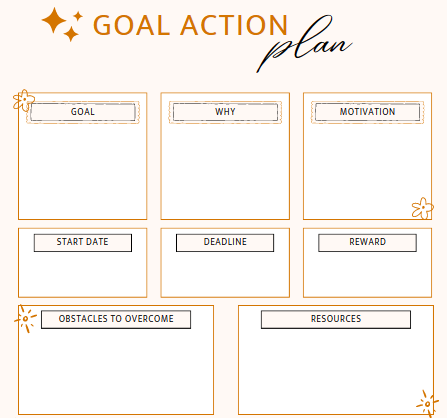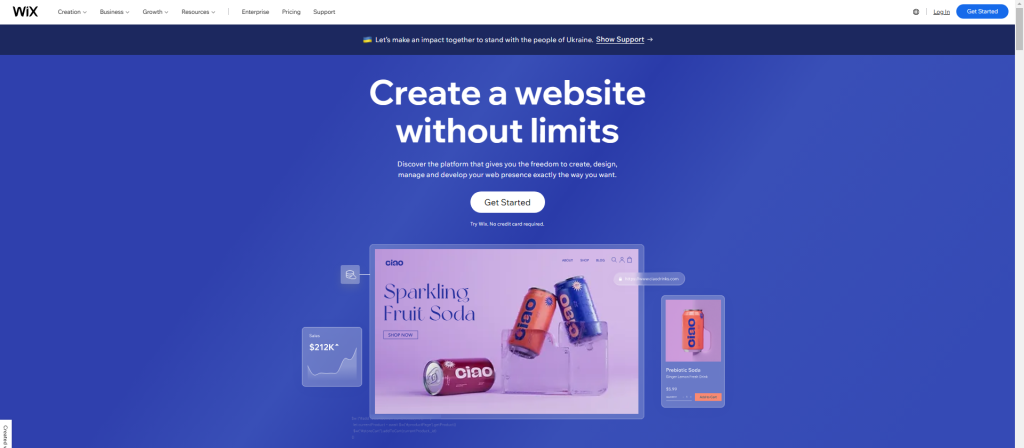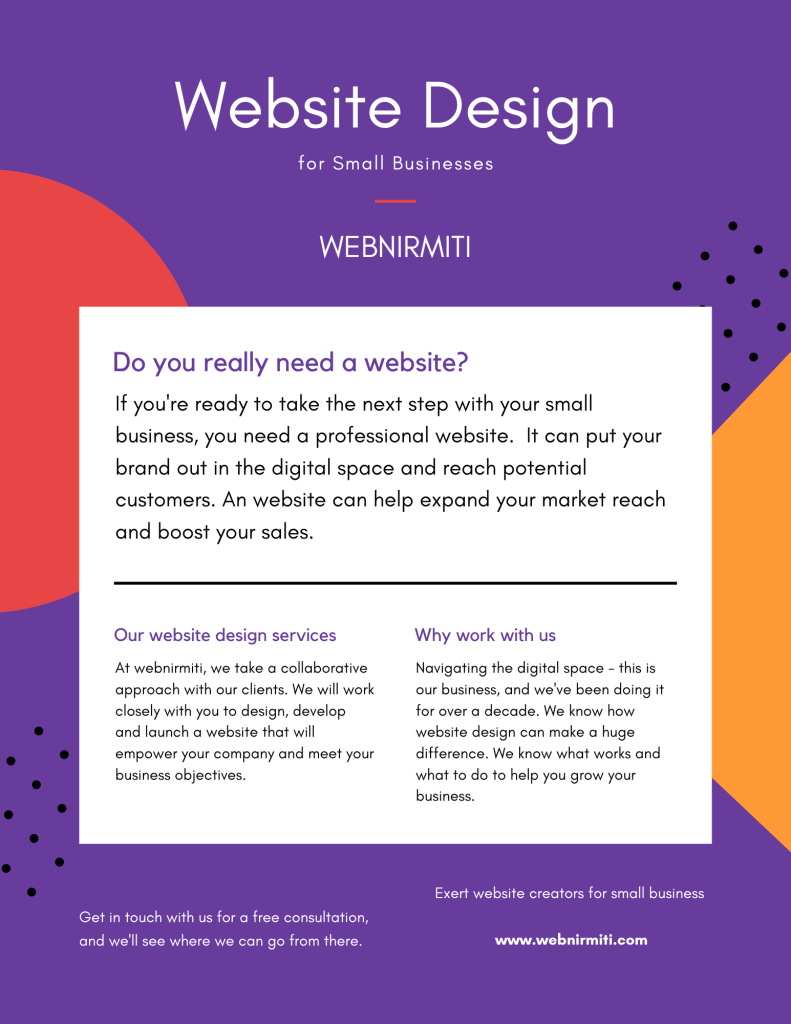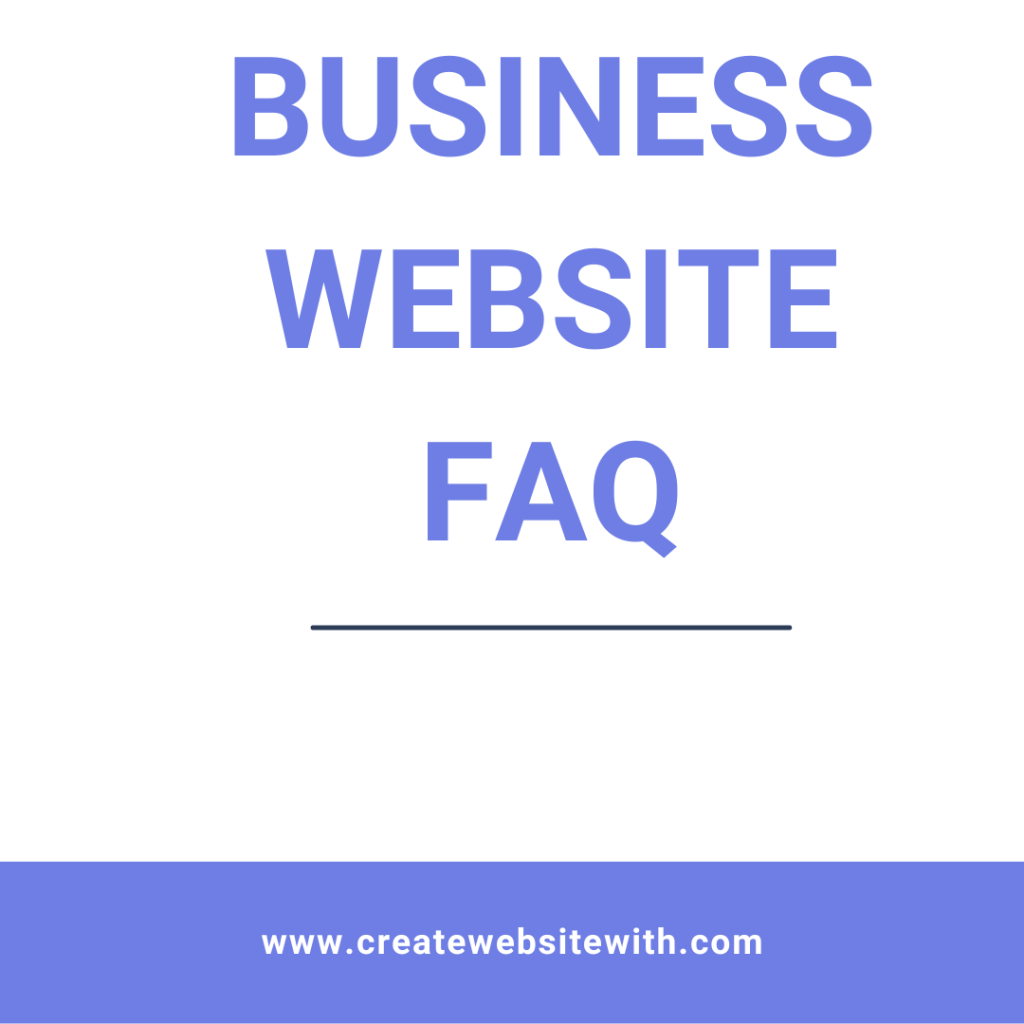
In the digital age, having a website is crucial to running a successful business. Whether you’re starting a new business or expanding an existing one, having an online presence is essential to reach customers, showcase your products and services, and establish credibility. In this guide, we will go over the steps involved in creating a website for a business and provide tips and best practices along the way. So let learn how to create business website or how to create a website.
Table of Contents for how to create business website for small business
Importance of having a website for a small business
A website is the first thing many potential customers will see when looking for information about your business. It acts as an online brochure, providing details about your products and services, contact information, and more. Additionally, having a website can help you reach a larger audience, as more and more people are turning to the internet to find the products and services they need. A website can also help you establish credibility, and professionalism, as well as provide customers with a convenient way to purchase your products or services. In short, having a website is essential for businesses that want to stay competitive and reach their full potential in the digital age.
Primary steps involved in How to create business website
- Define your goals: Before you start creating a website, it’s important to understand what you want to achieve. What are your goals for your website? Who is your target audience? What type of content will you include? Answering these questions will help you determine the type of website you need and what features you should include.
- Choose a platform: Many website-building platforms are available, each with its own features and capabilities. Some popular options include WordPress, Wix, and Squarespace. Consider your goals, budget, and technical expertise when selecting a platform.
- Pick a domain name and hosting: Your domain name is the web address people will use to find your website. Select a domain name that is memorable and relevant to your business. Hosting is the service that makes your website accessible to the world. Choose a reliable hosting provider with the right features and support.
- Design and layout: Determine the look and feel of your website. Choose colors, fonts, and images representing your brand and appealing to your target audience. Consider the layout of your pages, including the header, navigation, and footer.
- Add content: Create or gather the content you want to include on your website. This may include text, images, videos, and more. Ensure that your content is high-quality, relevant, and engaging.
- Test and launch: Before you launch your website, test it thoroughly to ensure it looks and functions as you intended. Once you’re satisfied with your website, make it live by launching it on your domain and hosting.
- Maintain and update: After your website is live, you will need to maintain and update it regularly. This may include fixing bugs, adding new content, and making other changes as needed. You can get your website maintained by professional team here
Purpose and Objectives of the Website
Creating a website for your business requires careful planning, and it all starts with defining the purpose and objectives of the website. This section covers the steps involved in identifying your target audience, defining the goals and objectives of the website, and creating a plan for the website’s content and structure.
Identifying the Target Audience
Knowing your target audience is essential to creating a website that will resonate with your customers. Understanding the demographics, interests, and needs of your target audience can help you create content and features that will appeal to them. Some of the ways you can identify your target audience include conducting market research, analyzing website analytics data, and creating customer personas.
Defining the Goals and Objectives of the Website

Defining the goals and objectives of your website is critical to ensure that it aligns with your overall business objectives. Your website’s goals and objectives should be specific, measurable, achievable, relevant, and time-bound (SMART). Some common goals and objectives for a business website include generating leads, increasing brand awareness, improving customer engagement, and increasing sales.
Creating a Plan for the Website’s Content and Structure
Once you have identified your target audience and defined your website’s goals and objectives, the next step is to create a plan for the website’s content and structure. Your website’s content should be informative, engaging, and relevant to your target audience. It should also be optimized for search engines to improve your website’s visibility online. Your website’s structure should be user-friendly, with clear navigation and a logical hierarchy of information.
Some tips for creating a plan for your website’s content and structure include:
- Conducting keyword research to identify the search terms your target audience uses to find your products or services.
- Creating a site map to organize the website’s structure and pages
- Writing high-quality, engaging copy that aligns with your brand voice and speaks to your target audience
- Using visuals, such as images and videos, to enhance the user experience and communicate your message
- Incorporating calls-to-action (CTAs) throughout the website to encourage visitors to take action and engage with your business.
By taking the time to define the purpose and objectives of your website and creating a plan for your content and structure, you can create a website that will effectively engage your target audience and help your business achieve its goals.
Domain names and web hosting
A domain name is the unique address of a website on the internet. It serves as the website’s online identity and makes it easier for people to find and access the website. Web hosting, on the other hand, is the service that enables the website to be accessible on the internet. It involves storing the website’s files and data on a server, which allows it to be accessed by visitors.
Factors to consider when choosing a domain name
- Relevance: The domain name should reflect the nature of the business or the purpose of the website. It should be easy to remember and relate to the brand.
- Availability: The domain name should be available for registration. One can use tools like Domain.com, GoDaddy, or Namecheap to check domain availability.
- Length: The domain name should be short and concise. Long domain names are difficult to remember and can be prone to typos.
- Keywords: Including relevant keywords in the domain name can help improve search engine optimization (SEO) for the website.
- Branding: The domain name should be consistent with the overall branding of the business.
Recommendations for web hosting providers
Bluehost: It is recommended by WordPress and is a popular choice for beginners due to its easy setup and affordable pricing.
SiteGround: It offers fast and reliable web hosting and is known for its excellent customer support.
HostGator: It offers a wide range of hosting options and is suitable for businesses of all sizes.
WP Engine: It is a premium WordPress hosting provider that offers managed hosting solutions, making it ideal for businesses with high-traffic websites.
Choosing the right domain name and web hosting provider is crucial to the success of a business website. It is important to take the time to research and evaluate the options available to ensure that the website is reliable, secure, and easily accessible to visitors.
Designing and Building the Website
Choosing a website builder
The first step in designing and building a website for a business is to decide whether to use a website builder or hire a web designer. Website builders such as Wix, Squarespace, and WordPress offer a range of templates and tools that make it easy to create a website without any coding experience. Hiring a web designer, on the other hand, provides more customization options and a professional touch to the website.
Some details on website builder and our recommendation if you are going DIY way:
Creating website for business – using WIX

Wix is a website builder and hosting platform that allows users to create and design their own websites without any coding knowledge. It is popular among small businesses, individuals, and entrepreneurs looking to create a simple website quickly and easily.
Wix offers a wide variety of templates to choose from across different industries, and users can customize the design and layout of their website using the drag-and-drop editor. The platform also includes a blog feature, contact forms, and the ability to add e-commerce functionalities to the website using a built-in store feature. Wix also offers a mobile-optimized version of the website and built-in SEO tools to help with search engine optimization.
Wix has a free plan which includes a Wix subdomain, a limited number of pages, and features. Paid plans are also available which include the ability to connect a custom domain, remove the Wix branding, and access more design options, storage, and features. Wix offers several different plans: Combo, Unlimited, Pro, and VIP, each tailored to different needs. The Combo plan is $13 per month, Unlimited is $17 per month, Pro is $22 per month and VIP is $39 per month. Each plan includes different features and functionalities, as well as more storage and the ability to connect a custom domain.
Checkout websites created using WIX here
Create a website for business – using Squarespace

Squarespace is a website builder and content management system (CMS) that allows users to create and design their own websites without any coding knowledge. It is popular among creatives, small businesses, and individuals looking to create a visually stunning website.
Squarespace offers a variety of templates to choose from, and users can customize the design and layout of their website using the drag-and-drop editor. The platform also includes a blog feature, contact forms, and the ability to add e-commerce functionalities to the website using a built-in store feature. Squarespace also offers a mobile-optimized version of the website and built-in SEO tools to help with search engine optimization.
Squarespace offers four main plans: Personal, Business, Basic Commerce, and Advanced Commerce. The Personal Plan is $12 per month and includes a free custom domain for a year, and the ability to connect to a custom domain, unlimited storage, and basic integrations. The Business Plan is $18 per month and includes all the features from the personal plan, and also includes the ability to sell products on the website, and access to more integrations. The Basic Commerce Plan is $26 per month and includes all the features from the business plan, and also includes the ability to sell products online, and access to more commerce functionalities. The Advanced Commerce Plan is $40 per month and includes all the features from the basic commerce plan, and also includes more advanced features such as abandoned cart recovery, gift cards, and more.
Checkout some website created using Squarespace here
WordPress

WordPress is a popular content management system (CMS) and website builder that is used by millions of businesses and individuals around the world. It is open-source software that can be used for free and provides a powerful platform for building websites.
One of the key benefits of using WordPress is its flexibility and customization options. Users can choose from thousands of pre-made website templates (known as “themes”) as of this writing around 10000+ free themes or can build their own custom designs using HTML, CSS, and other programming languages. Additionally, WordPress provides a wide range of plugins that can add additional functionality to a website, such as e-commerce tools, social media integration, and search engine optimization (SEO) features. There are around 60000+ free plugins available.
Another advantage of WordPress is its ease of use. The platform is designed with user-friendliness in mind, and even those with no technical background can quickly learn how to use it. The built-in editor is intuitive and easy to use, and the platform provides extensive documentation and support resources.
In terms of hosting, WordPress is self-hosted, meaning users must find their own web hosting provider to host their website. However, many web hosting providers offer one-click installation of WordPress, making it easy for users to get started.
Overall, WordPress is a popular and powerful option for businesses looking to build a website, thanks to its flexibility, customization options, ease of use, and extensive support resources. We are createwebsitewith.com also recommend using WordPress as a website builder but be ready to learn new things while building your website.
Some of the worlds best sites created with WordPress checkout here.
Check out our step-by-step guide on create a website using WordPress
Hiring a Web Design Agency

Hiring a web designer or choosing a web design agency is an important decision when creating a website for a business. While some business owners may be able to design their own website, others may not have the skills, time, or desire to do so. In such cases, it may be best to hire a professional web designer or web design agency.
When considering whether to hire a web designer or agency, there are several factors to consider. These include:
Budget: How much money can you afford to spend on website design? Web design agencies tend to be more expensive than individual web designers.
Experience: Does the web designer or agency have experience designing websites for businesses similar to yours?
Portfolio: What is the web designer or agency’s portfolio of work? Do they have examples of websites they have designed that you like and that are similar in style to what you want for your business?
Communication: How easy is it to communicate with the web designer or agency? Are they responsive to your questions and concerns?
Timeframe: How long will it take for the web designer or agency to complete the website? Will they be able to meet your deadlines?
Once you have hired a web designer or agency, the web design process typically involves the following steps:
Discovery: The web designer or agency will work with you to understand your business, your target audience, and your goals for the website.
Design: The web designer or agency will create a design for the website based on the information gathered during the discovery phase.
Development: The web designer or agency will turn the design into a functioning website.
Testing: The web designer or agency will test the website to make sure it is functioning properly and looks good on different devices.
Launch: The website will be launched and made live on the internet.
Maintenance: The web designer or agency may offer ongoing maintenance and support services to ensure the website remains up-to-date and secure.
Hiring a web designer or agency can be a great option for businesses that want a professional-looking website but do not have the skills or time to design it themselves. By considering the factors outlined above and working with a reputable web designer or agency, businesses can ensure they get a website that meets their needs and helps them achieve their goals.
Recommendations for web design agency
Here are some of the recommended WordPress web design Agency:
- BlueHost They help you with design and marketing needs for your website.
- Webnirmiti They enable you to focus on your business by taking care of your website design and support needs.
The website design process
Once the decision has been made to use a website builder or hire a web designer, the website design process begins. This involves creating a design brief, selecting a color scheme and typography, and creating wireframes and mockups of the website’s pages. The design process also includes choosing images and graphics to use on the website, as well as deciding on the layout and structure of the site.
Designing and building a website is one of the most critical phases in creating a website for a business. This phase involves developing the website’s visual appearance, including the layout, colors, typography, and graphics, and building the website’s structure and functionality. Here are some essential steps involved in designing and building the website:
- Develop a Wireframe: A wireframe is a basic layout of the website that defines the structure, navigation, and functionality. A wireframe provides a visual representation of the website’s design and layout and can help ensure that the website’s goals and objectives are met.
- Choose a Design Theme: Once the wireframe is created, the next step is to choose a design theme. A design theme is a pre-designed template that provides the website’s look and feel, including the color scheme, font, and graphics.
- Develop the Website: After choosing the design theme, the website’s development phase begins. This phase involves creating web pages, adding content, images, and multimedia, and designing the website’s structure and functionality.
- Test the Website: Once the website is developed, it’s essential to test it thoroughly to ensure that it’s working correctly. This testing phase involves checking the website’s performance, usability, and compatibility across different web browsers and devices.
- Launch the Website: Once the website is designed, built, and tested, the final step is to launch it. This phase involves publishing the website to the internet and making it live for the audience to see.
Best practices for website design:
There are several best practices that businesses should follow when designing a website. These include creating a responsive design that looks great on all devices, making the website easy to navigate with clear calls to action, and ensuring that the website loads quickly. Other best practices include using high-quality images and graphics, using clear and concise language, and ensuring that the website is accessible to users with disabilities. It is also important to make the website visually appealing and consistent with the business’s branding.
Populating the Website with Content
Writing and organizing content for the website
Once the website is designed, the next step is to populate it with relevant content. Content is an essential component of a website as it helps to communicate the purpose and value of the business to the target audience. The following are the key steps involved in populating a website with content:
- Develop a Content Strategy: A content strategy outlines the types of content to be created, how frequently it will be published, and who will be responsible for its creation. It also includes guidelines for the tone, style, and messaging of the content.
- Create Compelling Copy: Copywriting is the process of writing text that is designed to attract and engage the target audience. It is important to write clear, concise, and compelling copy that is relevant to the target audience and reflects the values and personality of the business.
- Use High-Quality Images: Images are an essential component of website content, as they help to break up text and make the website more visually appealing. It is important to use high-quality images that are relevant to the content and reflect the brand of the business.
- Incorporate Videos: Videos are a highly engaging form of content that can be used to communicate complex ideas, showcase products or services, and tell the story of the business. It is important to create high-quality videos that are relevant to the content and reflect the brand of the business.
- Optimize the Content for Search Engines: Search engine optimization (SEO) is the process of optimizing website content to rank higher in search engine results pages. It is important to incorporate relevant keywords into the content and use meta descriptions, title tags, and other SEO tactics to improve the website’s visibility in search results.
- Keep the Content Fresh: It is important to keep the website’s content fresh and up-to-date to ensure that visitors have a reason to return. This can be achieved by creating new content regularly, updating existing content, and incorporating social media feeds and other dynamic content into the website.
Optimizing content for search engines
Optimizing content for search engines, also known as search engine optimization (SEO), is a crucial step in ensuring that your website ranks high on search engine results pages (SERPs). This is important because higher search engine rankings increase the visibility and accessibility of your website to potential customers, which in turn can lead to increased traffic, leads, and revenue.
Here are some key strategies for optimizing your website’s content for search engines:
- Conduct keyword research: Use tools like Google Keyword Planner or SEMrush to research and identify the keywords and phrases that your target audience is using to search for your products or services.
- Create high-quality, engaging content: Develop content that is relevant to your target audience and provides value to them. This can include blog posts, articles, product descriptions, and more.
- Incorporate keywords strategically: Once you have identified the keywords you want to target, incorporate them into your content strategically, including in titles, headers, and throughout the body of your content. However, be careful not to overuse keywords, which can be seen as spammy and may hurt your search engine rankings.
- Optimize meta descriptions and title tags: Meta descriptions and title tags are the brief descriptions that appear in search engine results pages. Optimize them by including relevant keywords and creating compelling, concise descriptions that entice users to click through to your website.
- Use header tags: Use header tags (H1, H2, H3, etc.) to break up your content into sections and make it more scannable for users and search engines.
- Optimize images and other media: Optimize images and other media on your website by using descriptive filenames, adding alt text that describes the image, and compressing the file size to improve page load times.
Adding images, videos, and other media to the website
Adding images, videos, and other media to a website is an essential step in creating an engaging and visually appealing online presence for your business. Here are some things to keep in mind when adding media to your website:
- Choosing the right file format: Depending on the type of media you want to add to your website, there are different file formats to consider. For images, the most common formats are JPEG, PNG, and GIF. For videos, the most common formats are MP4, MOV, and AVI. It’s important to choose the appropriate format to ensure the best quality while keeping the file size as small as possible.
- Optimizing media for the web: It’s important to optimize your media for the web to ensure that your website loads quickly and efficiently. This includes compressing images to reduce file size, resizing images to fit your website’s design, and compressing videos to reduce their size without losing quality.
- Adding alternative text: Adding alternative text (also known as alt text) to your images and videos is important for accessibility and SEO. Alt text describes the content of the media for users who cannot see the media, such as those who are visually impaired or using assistive technology. Alt text also helps search engines understand the content of your media and can improve your website’s SEO.
- Choosing high-quality media: When adding media to your website, it’s important to choose high-quality media that represents your business in the best possible light. This can include professional photos, videos, and other media that help tell the story of your brand.
Promoting and Marketing the Website
Search engine optimization (SEO)
Search engine optimization (SEO) is the process of optimizing a website’s content and structure to increase the quantity and quality of organic traffic from search engines. It involves various on-page and off-page optimization techniques that are aimed at making a website more search engine-friendly and visible to users who are searching for relevant keywords.
Here are some best practices for SEO:
- Conduct keyword research: Identify the keywords and phrases that your target audience is searching for and incorporate them in your website’s content and meta tags.
- Create quality content: Create unique, high-quality, and relevant content that provides value to your audience.
- Optimize meta tags: Optimize your title tags, meta descriptions, and header tags with your target keywords to improve the relevance and visibility of your content.
- Build high-quality backlinks: Earn high-quality backlinks from reputable and authoritative websites in your industry to improve your website’s domain authority and search engine ranking.
- Use social media: Leverage social media channels to promote your website and share your content with your followers.
- Use local SEO: Optimize your website for local search by including your business name, address, and phone number on your website and in local directories.
- Monitor and analyze your website’s performance: Use analytics tools to track your website’s performance, identify areas for improvement, and make data-driven decisions to improve your website’s visibility and performance in search engines.
Using social media and email marketing to promote the website.
Using social media and email marketing are great ways to promote a website and increase its reach. Here are some tips for using these marketing channels effectively:
- Choose the Right Channels: Not all social media platforms are created equal, and not all channels will be a good fit for your business. Consider your target audience and which platforms they are most likely to use. For example, if your audience is primarily professionals, LinkedIn may be a good choice. If your audience is younger, platforms like TikTok or Instagram may be more effective.
- Create a Consistent Brand Voice: Your brand voice should be consistent across all channels. Use the same tone, messaging, and imagery to create a cohesive brand experience for your audience.
- Use Visual Content: Images and videos tend to perform better than text alone. Use high-quality images and videos to capture your audience’s attention and communicate your message.
- Engage with Your Audience: social media is a two-way street. Engage with your audience by responding to comments and messages, asking for feedback, and running contests or giveaways.
- Build an Email List: Email marketing is a highly effective way to communicate with your audience. Offer incentives like discounts or exclusive content to encourage people to sign up for your email list.
- Use Personalization: Personalization can improve the effectiveness of your email marketing campaigns. Use recipients’ names in the subject line and include personalized product recommendations or offers based on their past purchases or browsing history.
- Use Analytics: Use analytics to track the effectiveness of your social media and email marketing efforts. This will help you make data-driven decisions and refine your strategy over time.
Conversion optimization techniques
Implementing conversion optimization techniques is an important part of creating a successful business website. The goal of conversion optimization is to increase the percentage of website visitors who take a desired action, such as making a purchase or filling out a contact form.
Here are some tips for implementing conversion optimization techniques:
- Clearly define your call-to-action: Make sure that your website visitors know exactly what action you want them to take. Use clear and prominent calls-to-action throughout your website.
- Optimize your website for mobile devices: With an increasing number of people accessing the internet on their smartphones and tablets, it’s important to make sure your website is optimized for mobile devices.
- Use high-quality images and videos: High-quality images and videos can help to engage website visitors and increase the likelihood that they will take a desired action.
- Optimize your website for speed: A slow-loading website can be frustrating for visitors and can increase the likelihood that they will leave your site. Make sure your website is optimized for speed by minimizing image sizes and reducing the number of HTTP requests.
Test and measure your results: Implementing conversion optimization techniques is an ongoing process. Continuously test and measure your results to see what is working and what isn’t and make adjustments as needed.
Measuring and Improving the Website’s Performance
A successful website not only attracts visitors but also converts them into customers or achieves its defined goals. Therefore, it is essential to track the website’s performance using web analytics tools to monitor and evaluate its effectiveness. Here are some important steps to follow in order to measure and improve a website’s performance:
- Choose a web analytics tool: There are many web analytics tools available, such as Google Analytics, Adobe Analytics, and Piwik. Google Analytics is one of the most popular free web analytics tools available and is widely used for measuring website performance.
- Set up the analytics tool: Once you have chosen your analytics tool, you need to set it up. This involves installing the tracking code on your website, which is usually provided by the analytics tool provider. This code will collect data on your website visitors and their behavior.
- Define goals and conversions: Goals are what you want your website visitors to do on your website, such as make a purchase, fill out a form, or sign up for a newsletter. Conversions occur when a visitor completes a goal. By defining and tracking goals and conversions, you can measure the effectiveness of your website in achieving its objectives.
- Analyze website traffic and behavior: Web analytics tools provide detailed information about your website traffic, such as where visitors are coming from, how long they are staying on your site, and which pages they are visiting. By analyzing this data, you can identify areas for improvement and make data-driven decisions about your website.
- Make improvements based on data: Once you have analyzed your website’s performance, you can make improvements to optimize its performance. For example, if you notice that visitors are leaving your website after viewing a certain page, you can make changes to that page to encourage them to stay on your site longer.
- Continuously monitor and improve: Website analytics is an ongoing process, and it is essential to monitor your website’s performance regularly and make continuous improvements to achieve your goals.
Setting up website analytics tools – Google Analytics
Sign Up for Google Analytics
To get started, you’ll need to create a Google Analytics account. You can do this by visiting the Google Analytics website and following the on-screen instructions. Once you’ve created your account, you’ll be given a tracking code that you’ll need to add to your WordPress website.
Install Google Analytics on Your WordPress Website
To install Google Analytics on your WordPress website, you’ll need to use a plugin. There are several options available, including Google Analytics Dashboard for WP, MonsterInsights, and Analytify. Once you’ve installed and activated your chosen plugin, you’ll need to configure it using your Google Analytics tracking code.
Set Up Goals
Goals are a powerful tool in Google Analytics that allows you to track specific actions on your website, such as form submissions or purchases. To set up goals, navigate to the “Admin” section of your Google Analytics account and select “Goals.” From there, you can create a new goal and define the specific actions you want to track.
Step 4: Monitor Your Analytics Data
Once you’ve set up Google Analytics on your WordPress website, you’ll be able to monitor your website’s performance and gain valuable insights into your audience’s behavior. You can use this information to optimize your website and improve your marketing efforts.
Conclusion:
Creating a website for a business is an important step to establishing a strong online presence and attracting more customers. In this blog post, we have covered the essential steps in creating a business website. We started with identifying the purpose and objectives of the website, defining the target audience, and creating a plan for the website’s content and structure. We also discussed the importance of choosing the right domain name and web hosting provider and provided some recommendations for these services.
We then covered the process of designing and building the website, including choosing a website builder or web designer, the website design process, and best practices for website design. We discussed the importance of optimizing content for search engines, adding images, videos, and other media to the website, promoting and marketing the website through social media, email marketing, and implementing conversion optimization techniques.
Finally, we talked about measuring and improving the website’s performance through website analytics, with a focus on setting up Google Analytics for a WordPress website. By following these steps and best practices, you can create an effective and professional website for your business that helps you achieve your goals and grow your business online.
Remember, creating a website for a business is an ongoing process, and it requires regular updates and maintenance to keep it up-to-date and relevant. With dedication, time, and effort, your website can become a valuable asset for your business and a powerful tool for reaching more customers and growing your business.
Business Website FAQ

- Why do I need a website for my business? or Why should I have a website?
A website can help you establish an online presence, reach a wider audience, promote your products or services, and increase your credibility and brand awareness.
2. How much does it cost to create a business website? or How much does it cost to create a website for a small business?
The cost of creating a website varies depending on several factors, such as the complexity of the design, the number of pages, and the features and functionalities you need. You can create a website yourself for free or with a low budget using website builders or hire a professional web designer. Overall, a small business website can cost somewhere from $2000 to $6500
3. What should I include on my business website?
Your website should include relevant and engaging content, such as an about us page, product or service descriptions, customer testimonials, contact information, and a call-to-action (CTA) button to encourage visitors to take action.
4. How can I make my business website stand out?
You can make your website stand out by creating a unique and memorable design, using high-quality images and videos, optimizing your content for search engines, and providing a user-friendly and mobile-responsive experience.
5. What is the best platform for creating a business website?
The best platform for creating a business website depends on your needs, budget, and technical skills. Some popular options include WordPress, Wix, Squarespace, Shopify, and Weebly.
6. Do I need a web hosting provider for my business website?
Yes, you need a web hosting provider to store your website’s files and make them accessible to the internet. You can choose from various hosting options, such as shared hosting, VPS hosting, dedicated hosting, and cloud hosting.
7. How can I drive traffic to my business website?
You can drive traffic to your website by optimizing your content for search engines, using social media and email marketing, promoting your website on business directories and review sites, and running online ads.


